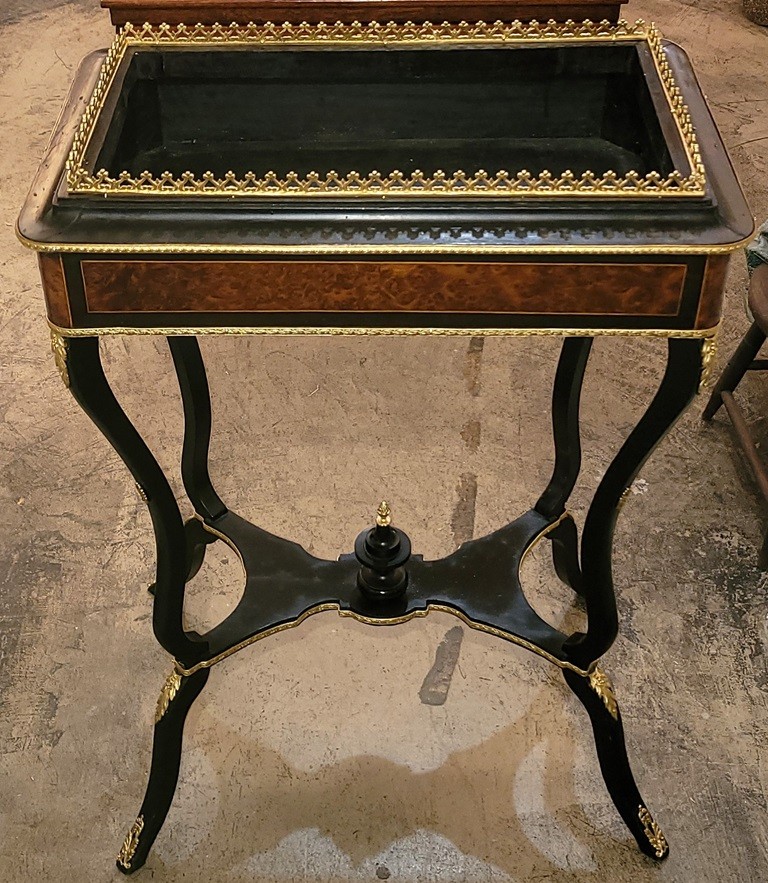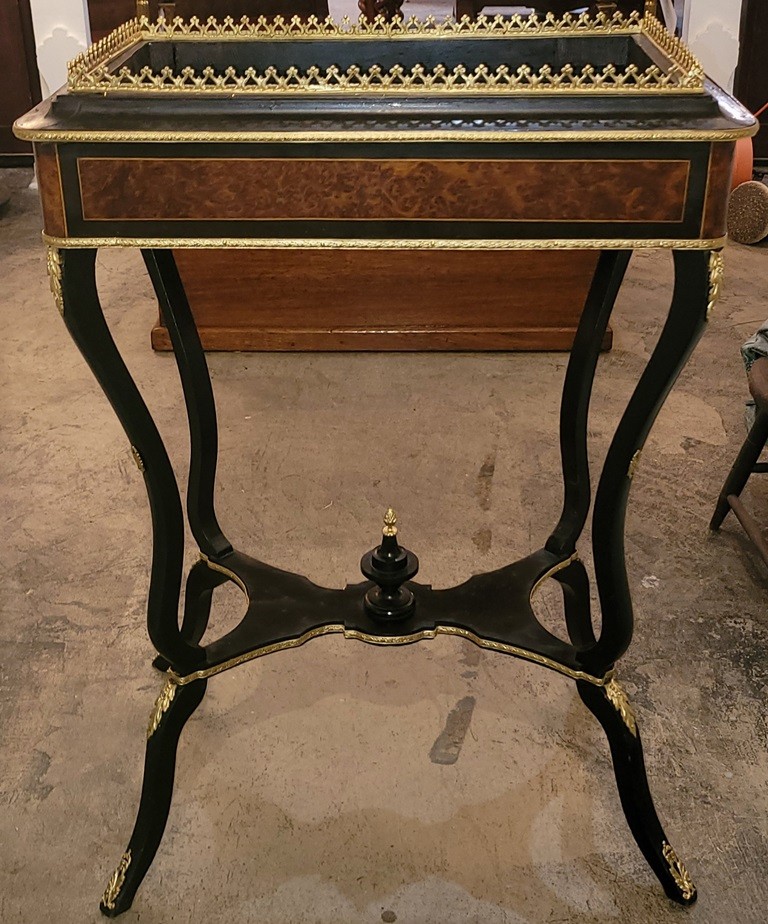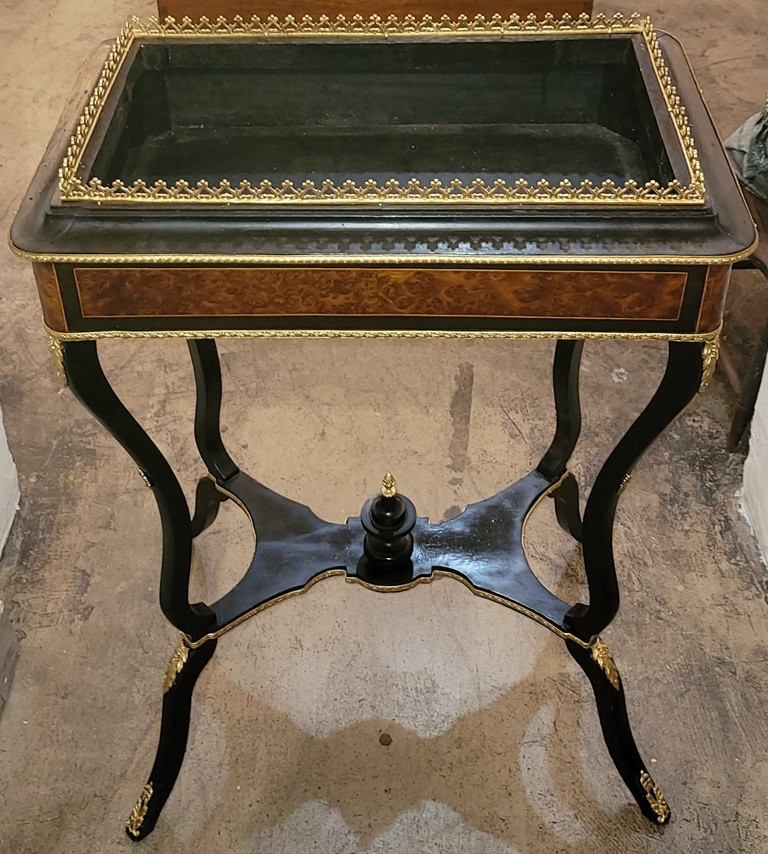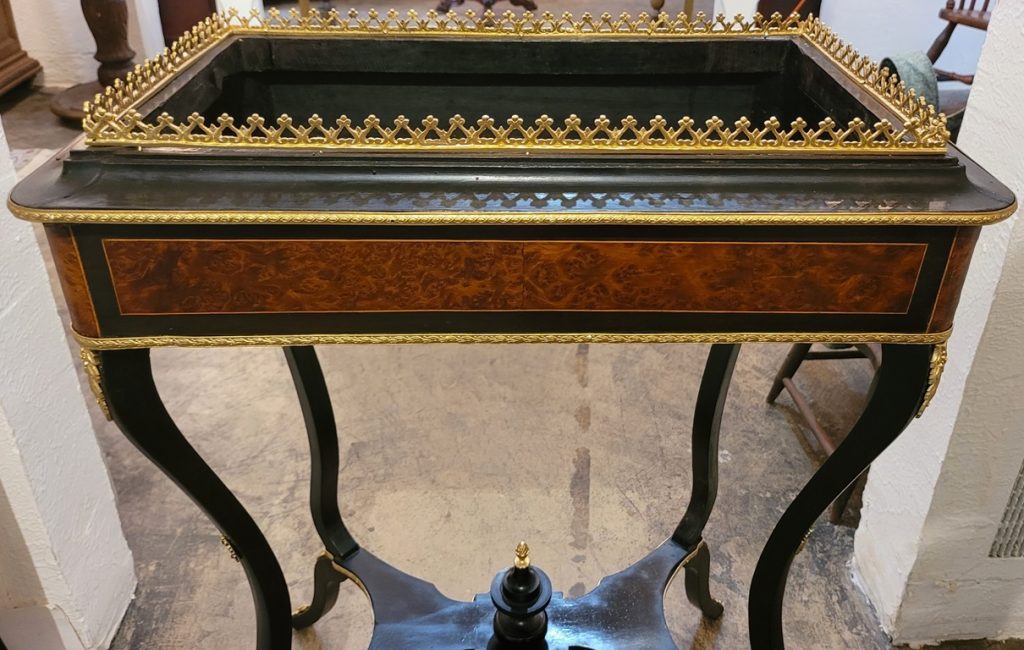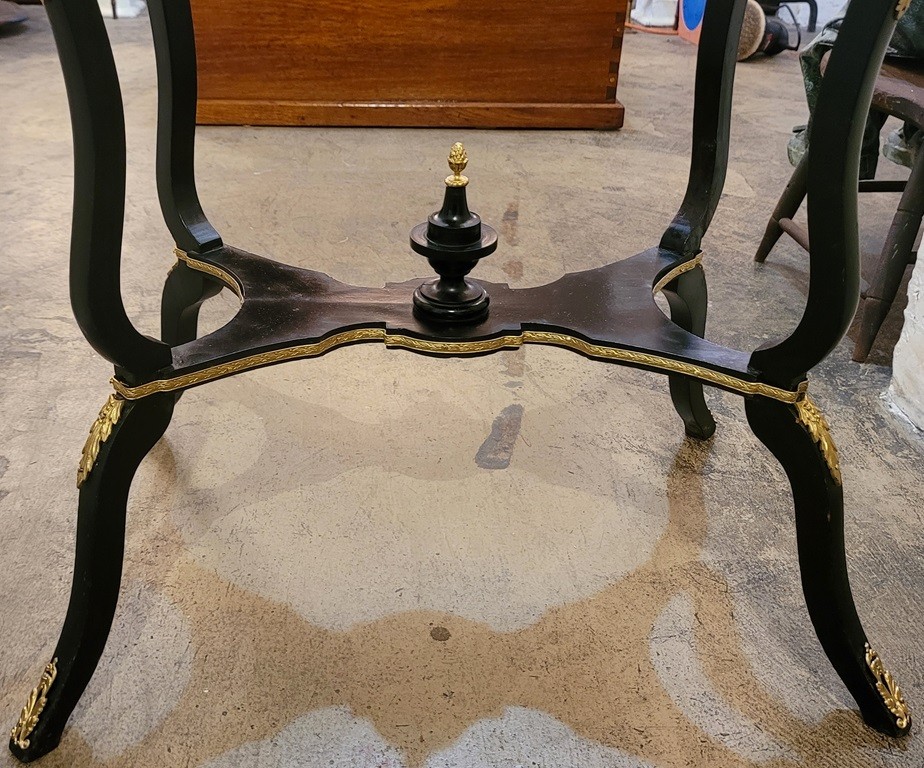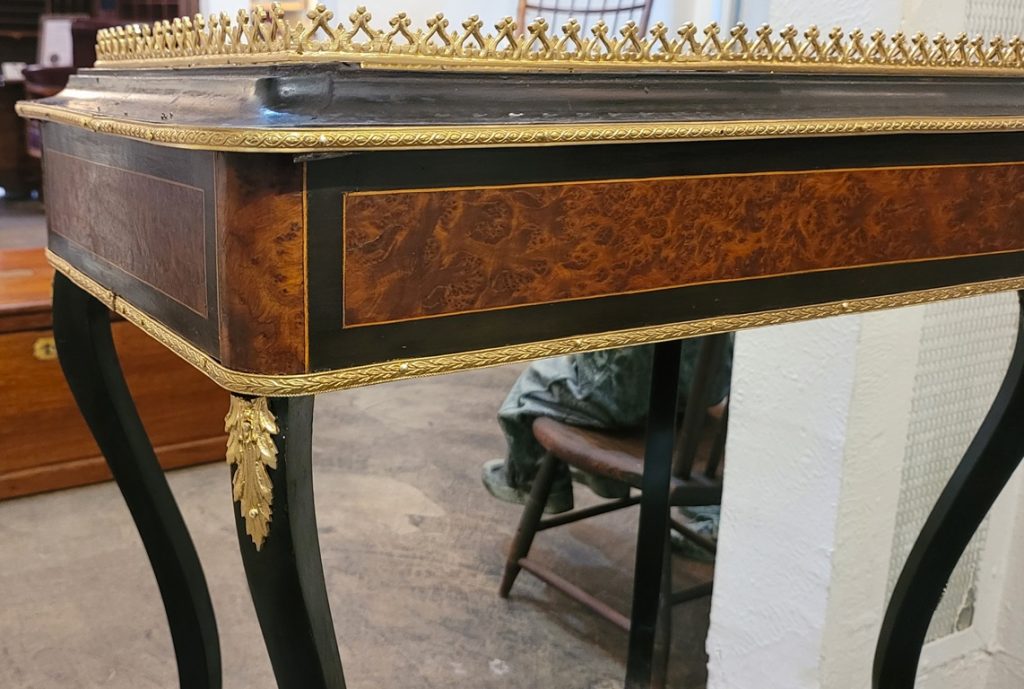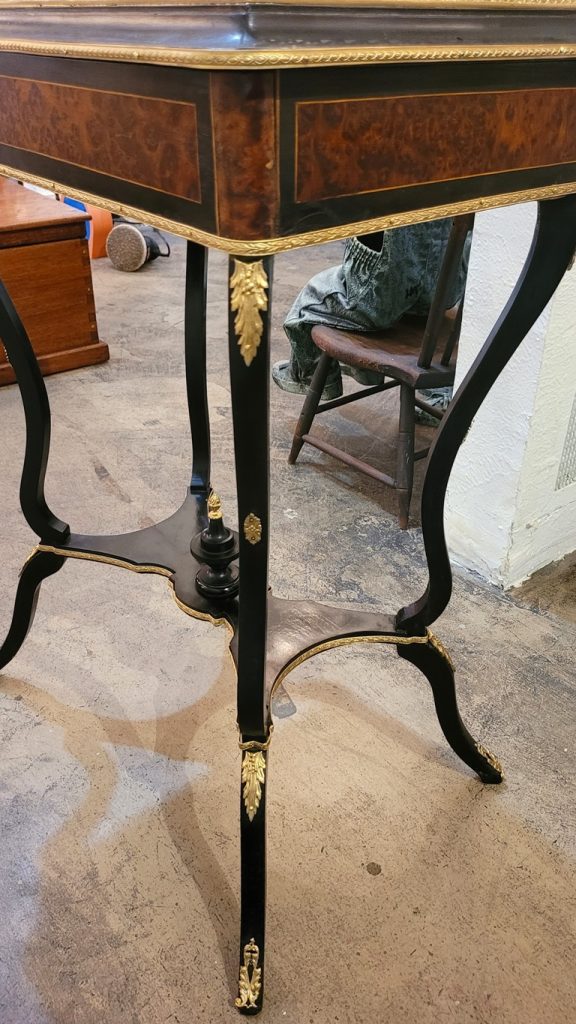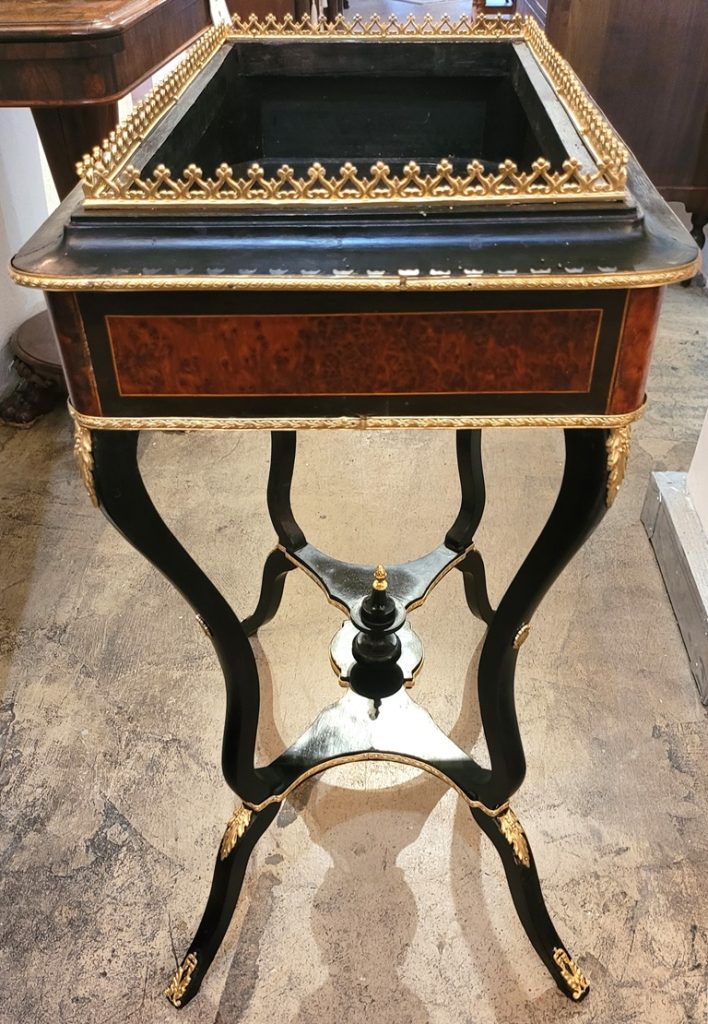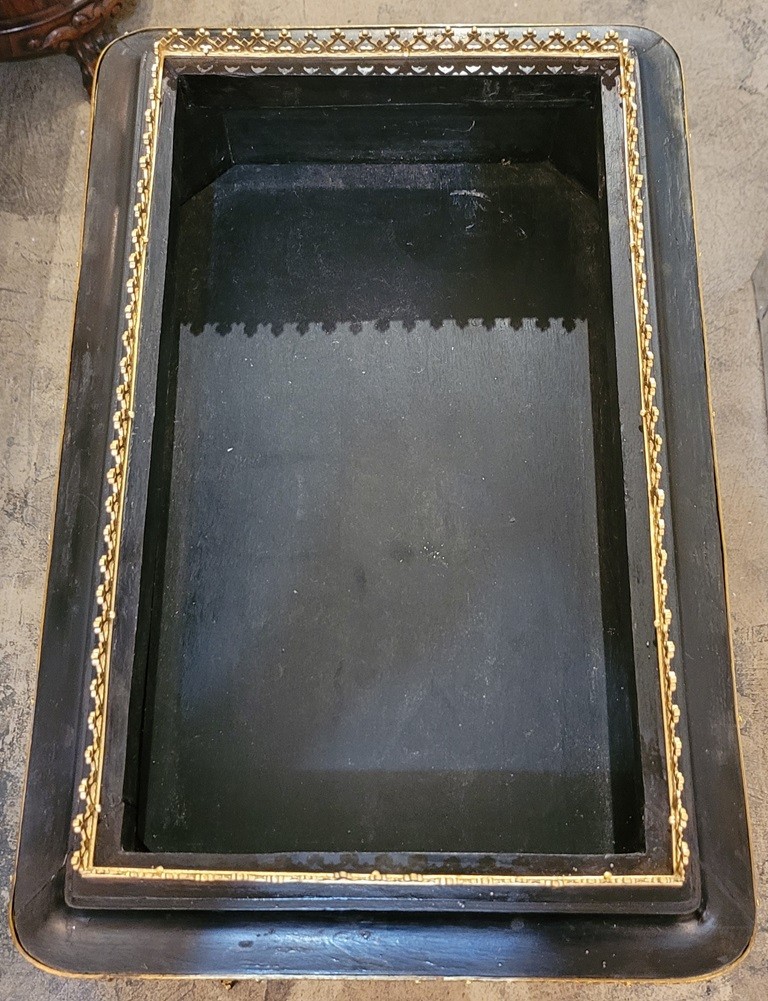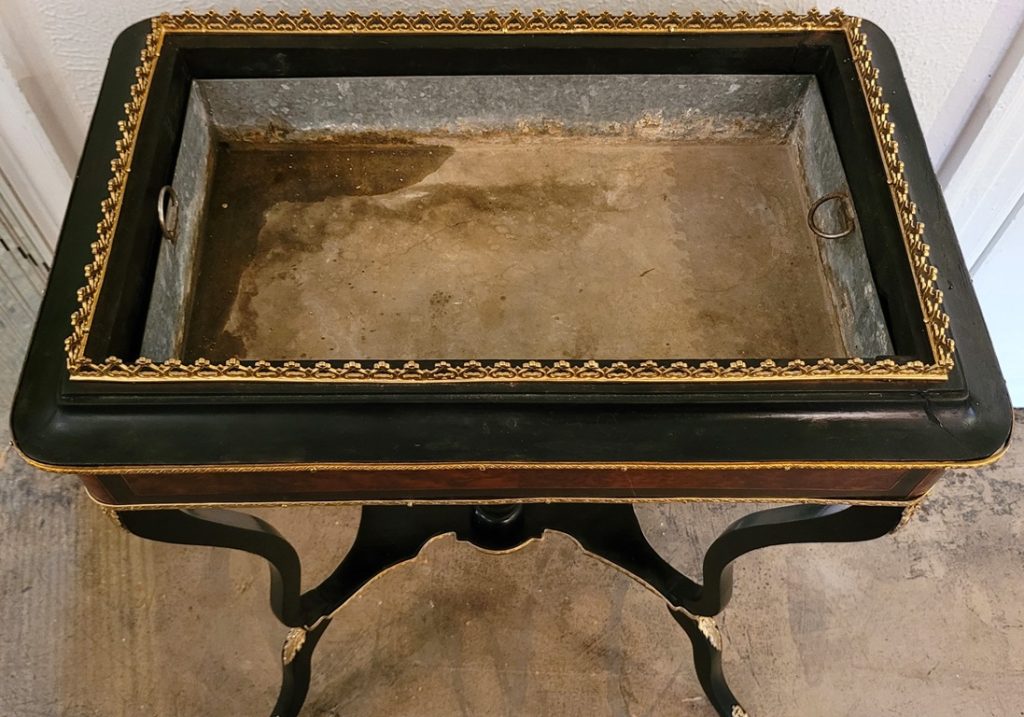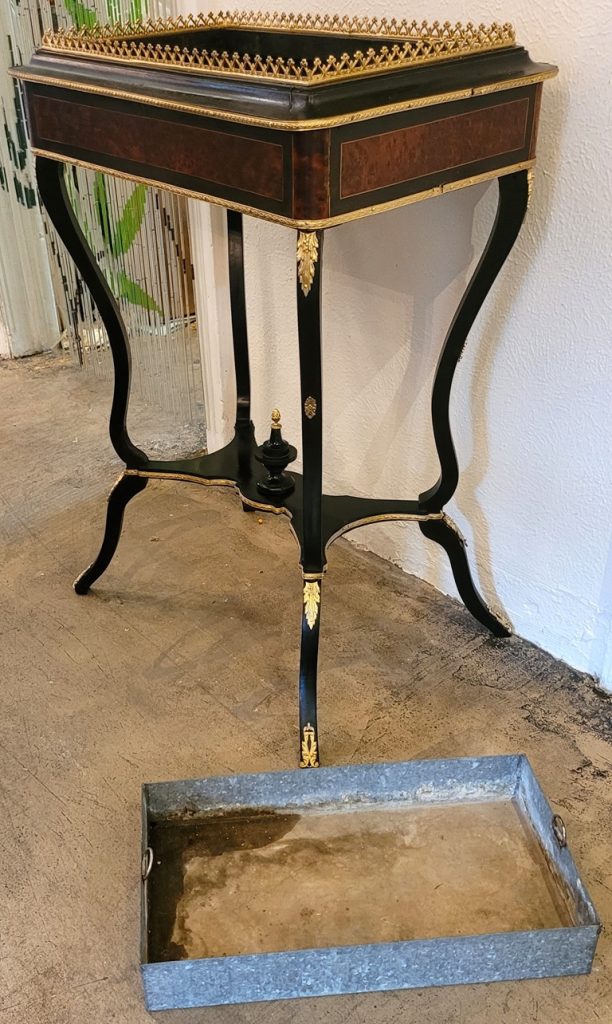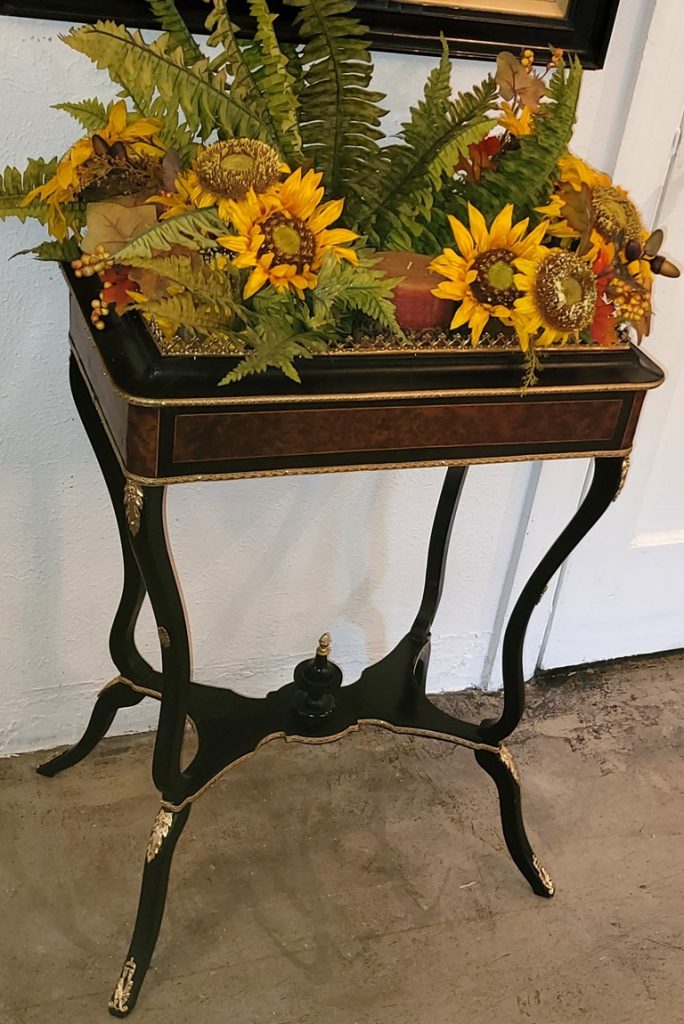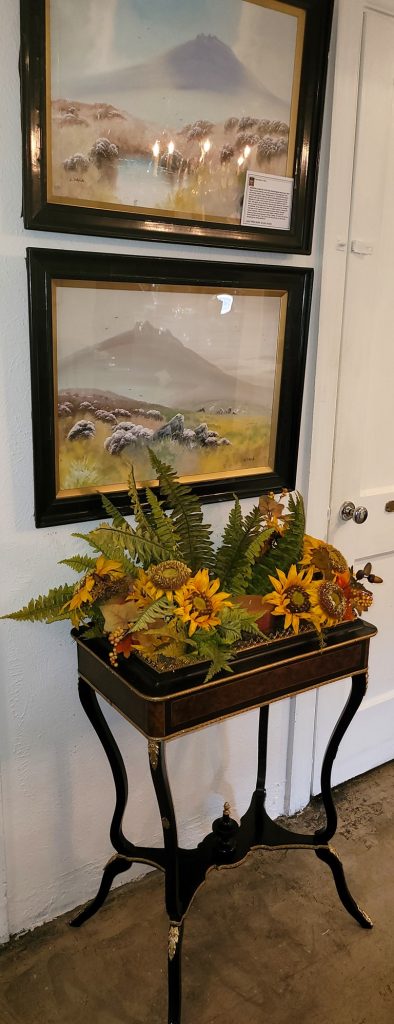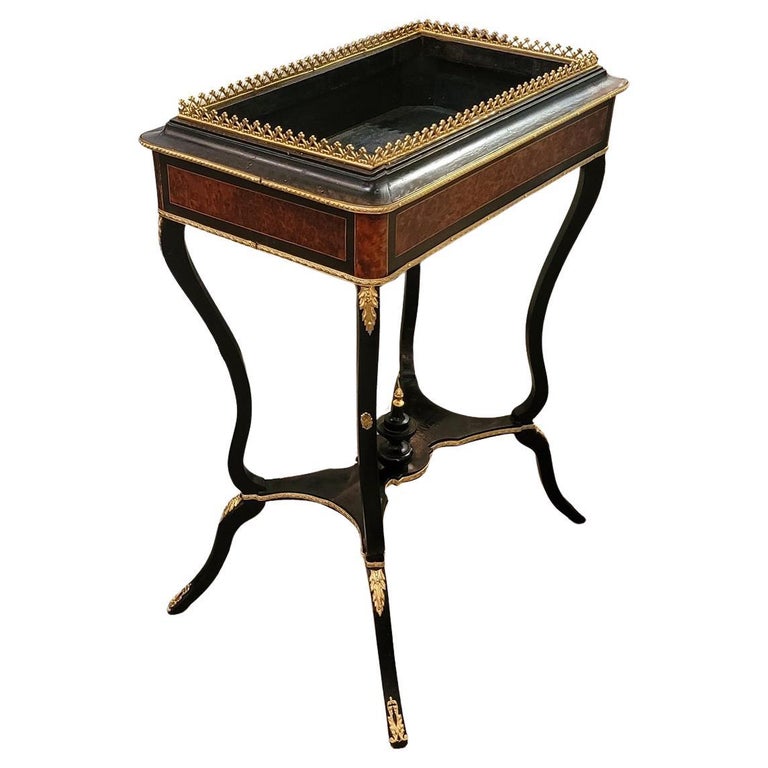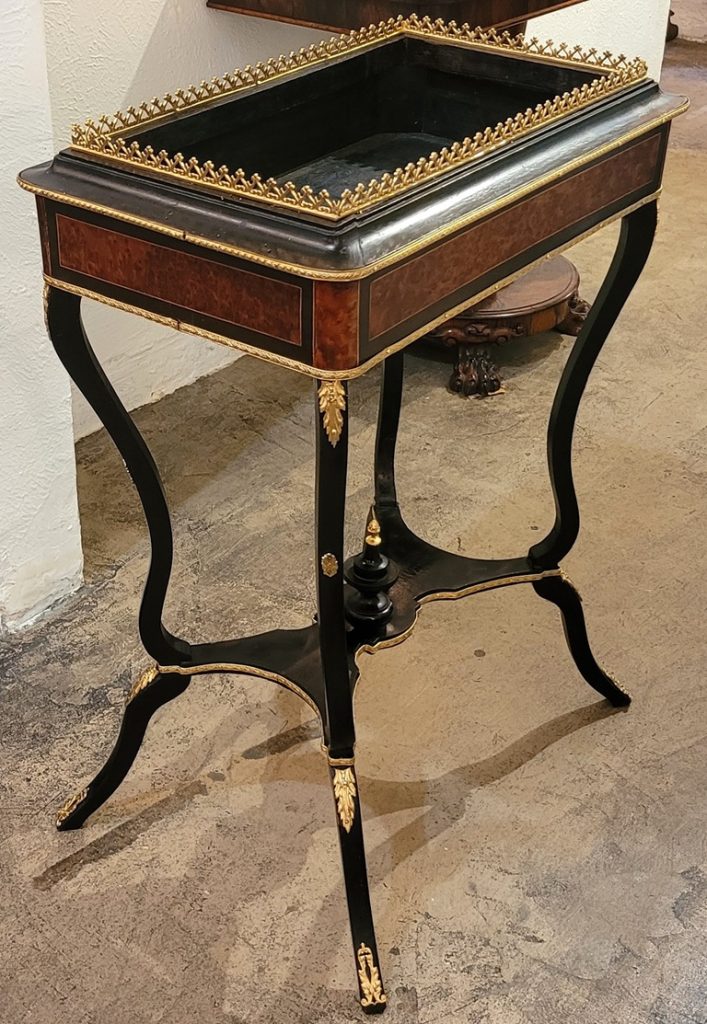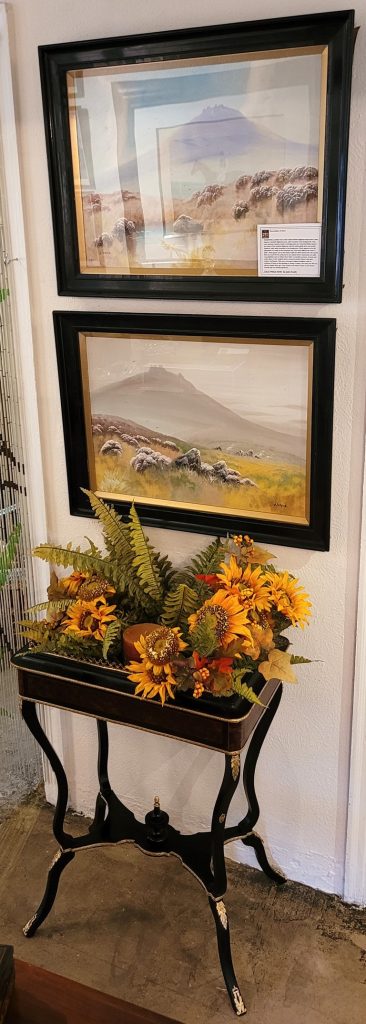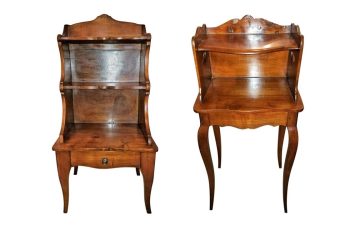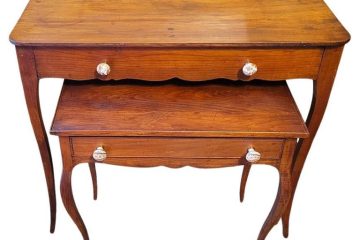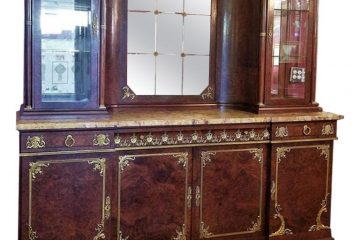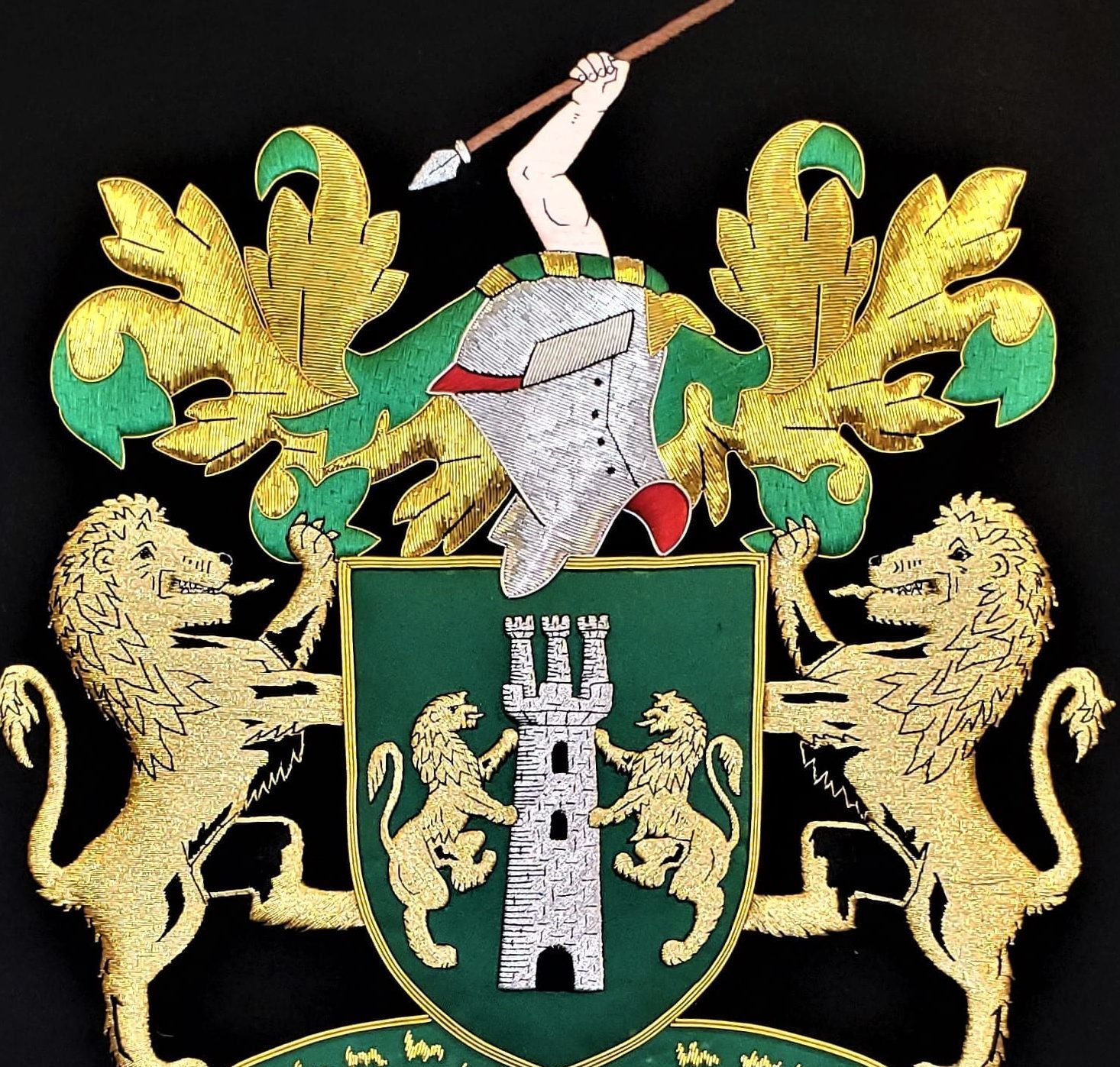PRESENTING A GORGEOUS ‘Period’ 19C Napoleon III Ebony and Amboyna Jardiniere or Plant Stand.
From circa 1860, this Jardiniere or Plant Stand is of the highest QUALITY.
Made during the Reign of Napoleon III.
In the style of a side table.
It is made of ebony, with floral ormolu mounts and floral ormolu bordering/molded edges, throughout.
It has a STUNNING set of amboyna wood panels on all sides of the top. The burl and natural patina is breathtaking.
The top is edged with an ormolu crown frieze gallery.
The 4 cabriolet legs are each topped with an ormolu leaf medallion, which is repeated on each directly under the central support platform. Each also has a oval ormolu leaf medallion on the midway point between the top and base platform. The platform is, likewise, edged with floral ormolu banding.
The platform support has a central bulbous finial, which is topped with an ormolu acorn.
The stand has a removeable galvanized metal tray (of later construction).
Recently re-gilded.
Some minor repairs but nothing significant or noticeable.
A SIMPLY GORGEOUS AND ELEGANT PIECE OF PERIOD FRENCH FURNITURE !
Napoleon III (born Charles-Louis Napoléon Bonaparte; 20 April 1808 – 9 January 1873), the nephew of Napoleon I, was the first elected President of France from 1848 to 1852. When he could not constitutionally be re-elected, he seized power in 1851 and became the Emperor of the French from 1852 to 1870. He founded the Second French Empire and was its only emperor until the defeat of the French army and his capture by Prussia and its allies in the Franco-Prussian War in 1870. He worked to modernize the French economy, rebuilt the center of Paris, expanded the overseas empire, and engaged in the Crimean War and the Second Italian War of Independence.
Napoleon III commissioned the grand reconstruction of Paris, carried out by his prefect of the Seine, Baron Haussmann. He launched similar public works projects in Marseille, Lyon and other French cities. Napoleon III modernized the French banking system, greatly expanded and consolidated the French railway system and made the French merchant marine the second largest in the world. He promoted the building of the Suez Canal and established modern agriculture, which ended famines in France and made France an agricultural exporter. Napoleon III negotiated the 1860 Cobden–Chevalier free trade agreement with Britain and similar agreements with France’s other European trading partners. Social reforms included giving French workers the right to strike and the right to organize. The first women students were admitted at the Sorbonne, and women’s education greatly expanded as did the list of required subjects in public schools.
In foreign policy, Napoleon III aimed to reassert French influence in Europe and around the world. He was a supporter of popular sovereignty and of nationalism. In Europe, he allied with Britain and defeated Russia in the Crimean War (1853–56). His regime assisted Italian unification by defeating the Austrian Empire in the Franco-Austrian War, and as its deferred reward later annexed Savoy and the County of Nice. At the same time, his forces defended the Papal States against annexation by Italy. Napoleon III doubled the area of the French overseas empire in Asia, the Pacific and Africa, however his army’s intervention in Mexico, which aimed to create a Second Mexican Empire under French protection, ended in total failure.
From 1866, Napoleon had to face the mounting power of Prussia as its Chancellor Otto von Bismarck sought German unification under Prussian leadership. In July 1870, Napoleon entered the Franco-Prussian War without allies and with inferior military forces. The French army was rapidly defeated and Napoleon III was captured at the Battle of Sedan. The Third Republic was proclaimed in Paris and Napoleon went into exile in England, where he died in 1873.
Link: https://en.wikipedia.org/wiki/Napoleon_III
Jardinière is a French word, from the feminine form of “gardener“. Jardinière has three meanings: a flower box, a receptacle (usually a ceramic pot or urn) or a stand upon which, or into which, plants may be placed. (The French themselves refer to tabletop versions of such receptacles as cachepots.) Jardinières tend to be highly decorative and are sometimes used as garden accent elements for large plants and for raised culinary and herb gardens AND/OR a dish that is cooked or served with a mixture of spring vegetables, such as peas, carrots, and green beans, AND/OR a name for the golden ground beetle, the European mole cricket, and other species of beetles that attack plants in kitchen gardens.
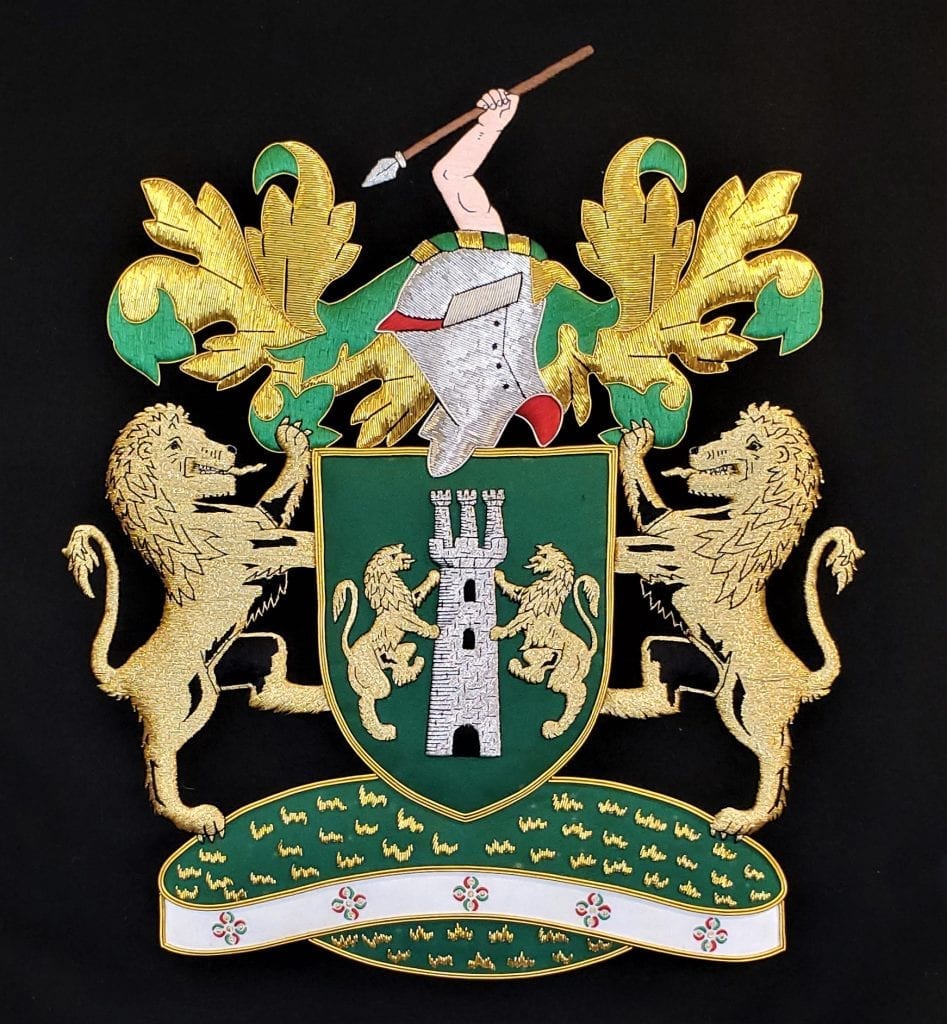

19C Napoleon III Ebony and Amboyna Jardiniere Stand
Provenance: From a North Texas Private Collection.
Condition: Very good. One minor repair to one leg and finial base, but not noticeable. Re-gilded.
Dimensions: 31.25 inches Tall, 22.5 inches Wide and 14.5 inches Deep
SOLD
